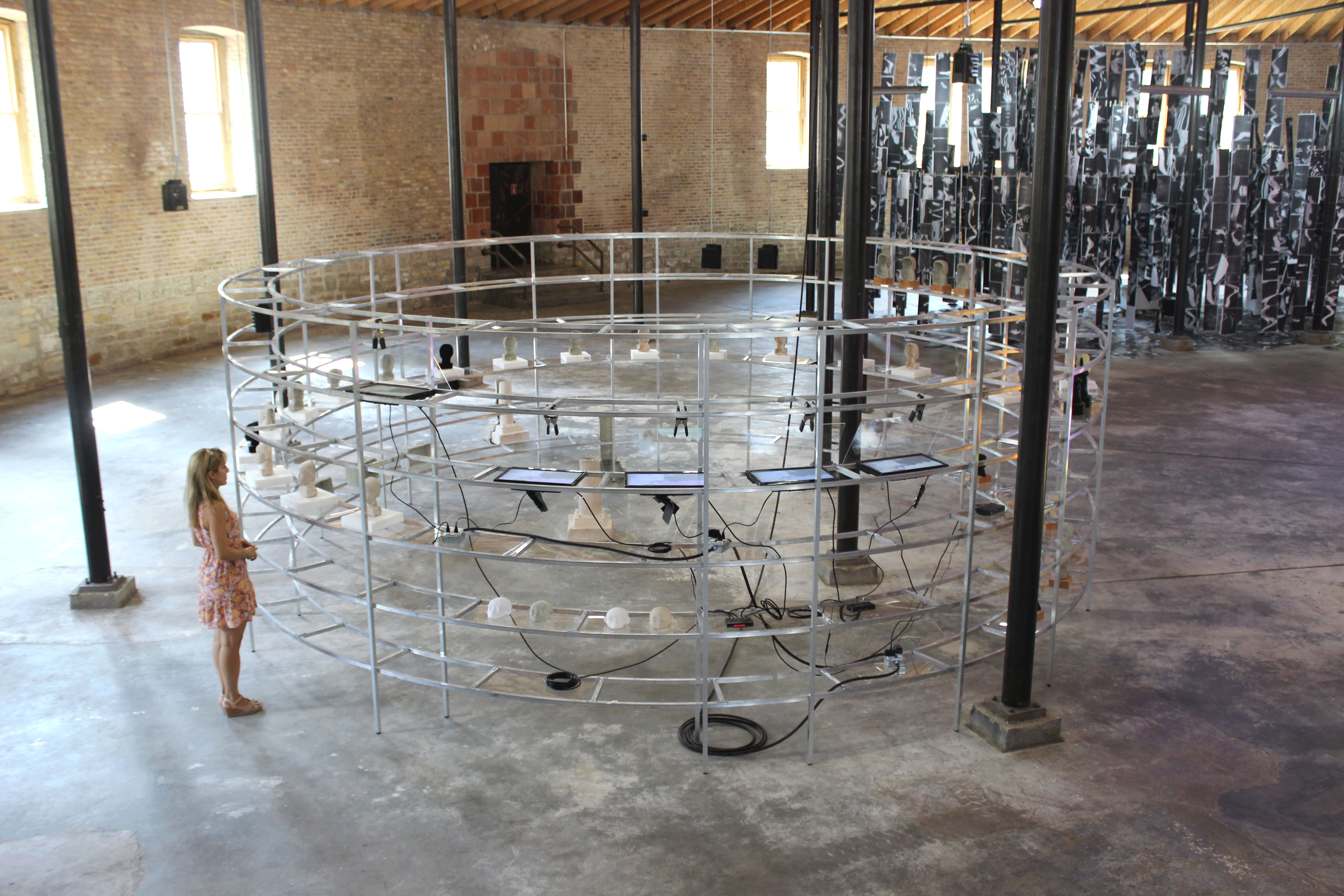
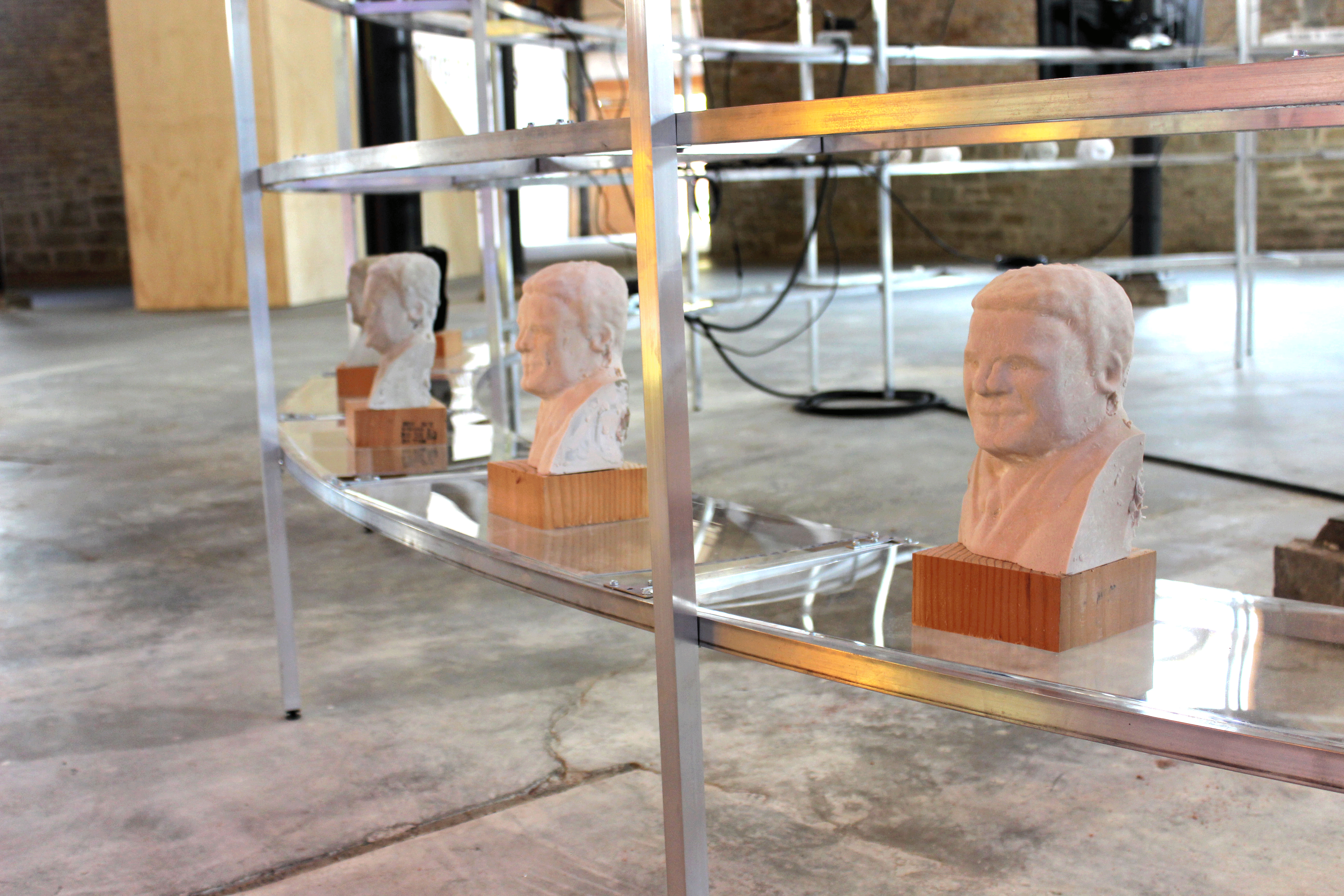
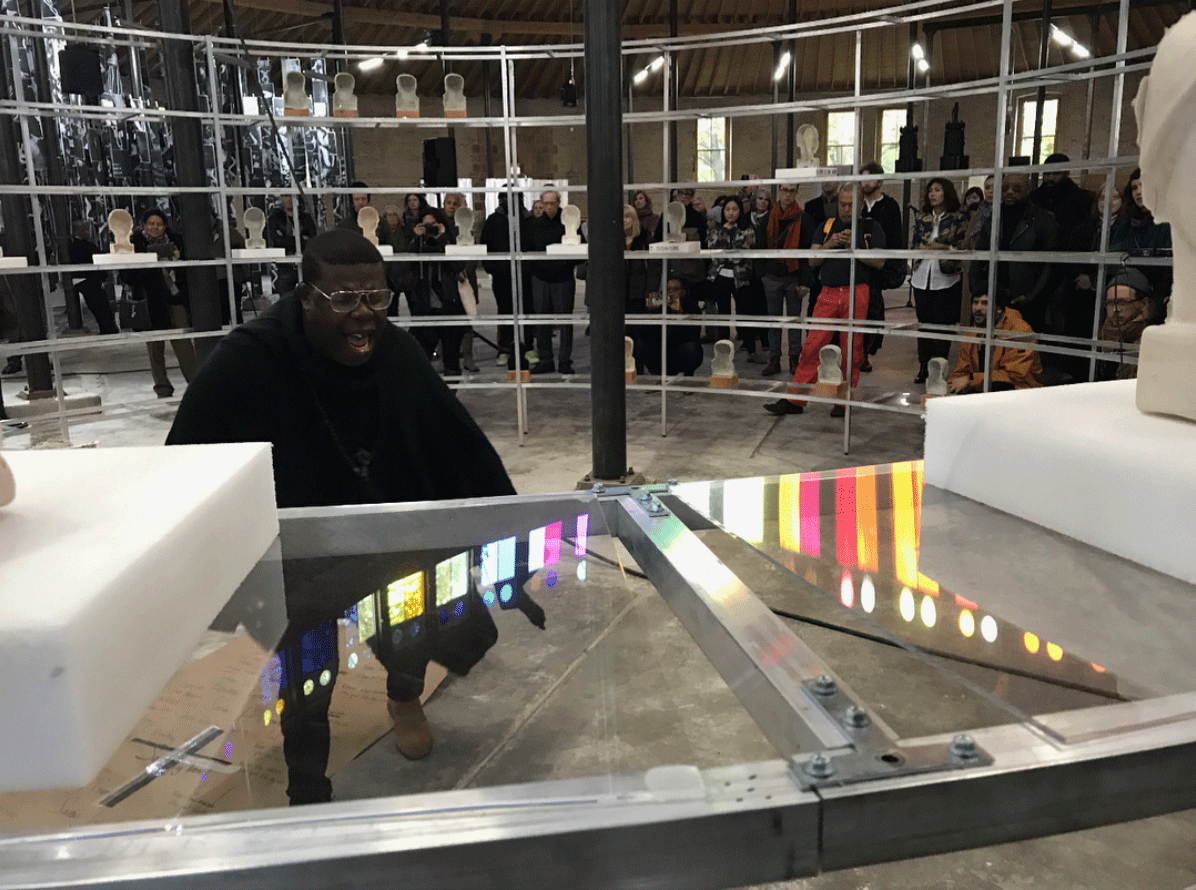
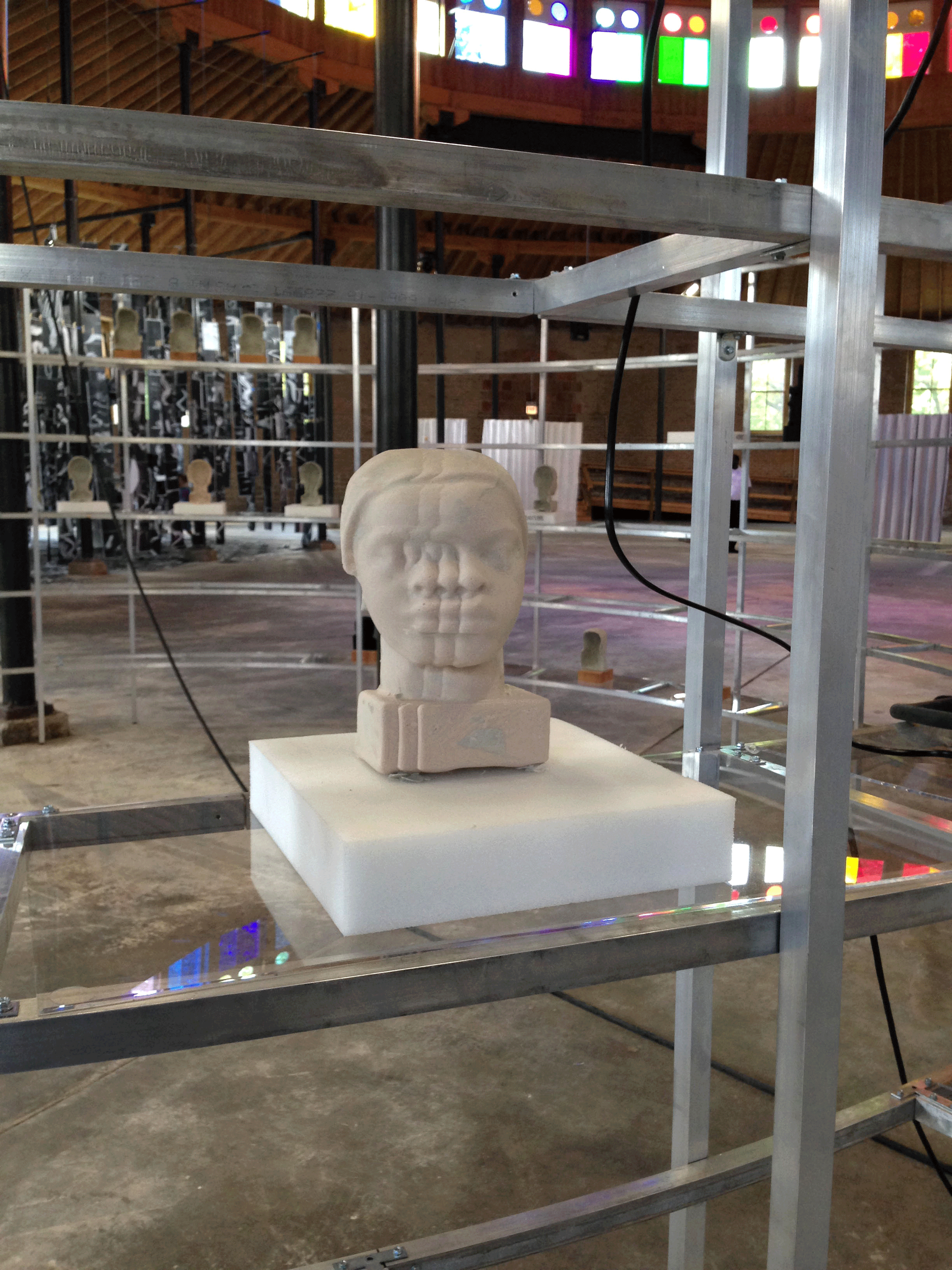
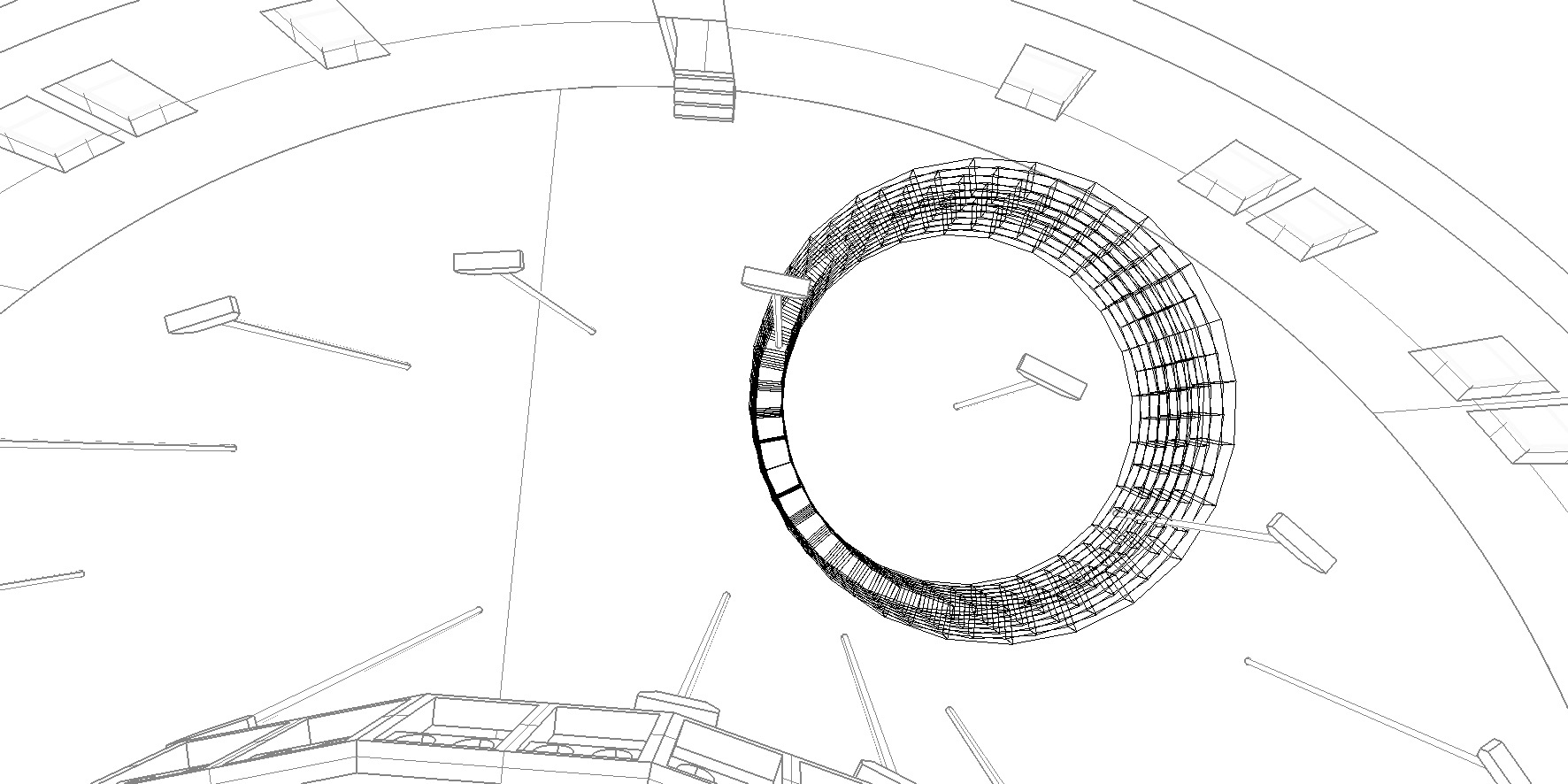

Description /
Singing Stones, curated by the Palais de Tokyo’s Katell Jaffrès, brought together 11 emerging artists from both the French and Chicago art scenes, as part of the first Hors les Murs exhibition in the United States, in partnership with the Institut français. Presented within The Roundhouse—a 17,000 sq. ft space built in 1881 and designed by Burnham & Root—at the DuSable Museum of African American History, the exhibition presented an intimate dialogue between original productions and pre-existing works that opened during the sixth edition of EXPO CHICAGO (September 13–17), and ran concurrently through the 2017 Chicago Architecture Biennial (September 16, 2017–January 7, 2018). The exhibition design involved a strong architectural component through a partnership with the Graham Foundation with Guest Designer Andrew Schachman, to collaborate with Jaffrès on a singular approach to the space and exhibition design.
Echo Location is a hybrid of exhibition, architectural infrastructure, and sculpture. The materials for the work referenced the idea of echo to imagine the interior envelope of the Roundbarn as a sonic material chamber utilizing an interactive kit of parts. The installation was materially mimetic and the logic of the physical kit materials behaved like sonic waves moving around, bouncing off and appropriating the physical surfaces of the building. The round barn materials-- wood, aluminum, brick and cement were mimicked through in the material of the framework and via 3D scans, image captures and an approximation of material lengths, connective joints, horizontal surfaces and vertical screens. This infrastructure displays the ghost of works by other artists participating in the exhibition in addition to transformations of the DuSable Museum’s collection.
In Miwon Kwon’s book One Place After Another: Site Specific Art and Locational Identity, she writes of Lucy Lippard working to define a sense of place amidst the uprooting of our lives from specific local cultures and places due to voluntary migration, itinerant work or forced migration as a kind of text of humanity. Floating Museum’s kit of parts will explore locational identity and site responsiveness while being interactive and textual. Echo location is in part inspired by Etienne-Jules Marey, a physiologist and contemporary of Eadweard Muybridge who developed chronophotography, a precursor to the motion picture camera.
Participating Organizations /
Palais de Tokyo / DuSable Museum of African American History / Chicago Expo / Consulate Général de France à Chicago / Studio Andrew Schachman
Singing Stones, curated by the Palais de Tokyo’s Katell Jaffrès, brought together 11 emerging artists from both the French and Chicago art scenes, as part of the first Hors les Murs exhibition in the United States, in partnership with the Institut français. Presented within The Roundhouse—a 17,000 sq. ft space built in 1881 and designed by Burnham & Root—at the DuSable Museum of African American History, the exhibition presented an intimate dialogue between original productions and pre-existing works that opened during the sixth edition of EXPO CHICAGO (September 13–17), and ran concurrently through the 2017 Chicago Architecture Biennial (September 16, 2017–January 7, 2018). The exhibition design involved a strong architectural component through a partnership with the Graham Foundation with Guest Designer Andrew Schachman, to collaborate with Jaffrès on a singular approach to the space and exhibition design.
Echo Location is a hybrid of exhibition, architectural infrastructure, and sculpture. The materials for the work referenced the idea of echo to imagine the interior envelope of the Roundbarn as a sonic material chamber utilizing an interactive kit of parts. The installation was materially mimetic and the logic of the physical kit materials behaved like sonic waves moving around, bouncing off and appropriating the physical surfaces of the building. The round barn materials-- wood, aluminum, brick and cement were mimicked through in the material of the framework and via 3D scans, image captures and an approximation of material lengths, connective joints, horizontal surfaces and vertical screens. This infrastructure displays the ghost of works by other artists participating in the exhibition in addition to transformations of the DuSable Museum’s collection.
In Miwon Kwon’s book One Place After Another: Site Specific Art and Locational Identity, she writes of Lucy Lippard working to define a sense of place amidst the uprooting of our lives from specific local cultures and places due to voluntary migration, itinerant work or forced migration as a kind of text of humanity. Floating Museum’s kit of parts will explore locational identity and site responsiveness while being interactive and textual. Echo location is in part inspired by Etienne-Jules Marey, a physiologist and contemporary of Eadweard Muybridge who developed chronophotography, a precursor to the motion picture camera.
Participating Organizations /
Palais de Tokyo / DuSable Museum of African American History / Chicago Expo / Consulate Général de France à Chicago / Studio Andrew Schachman